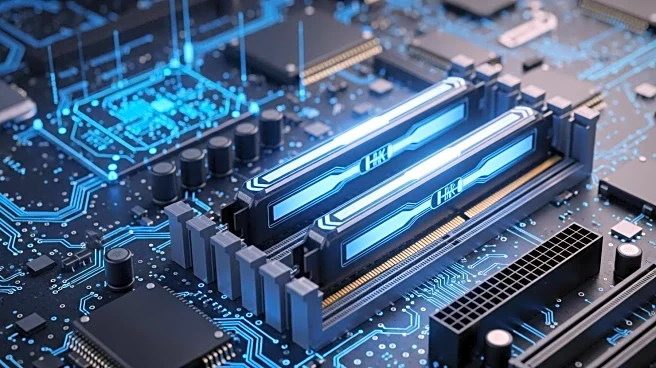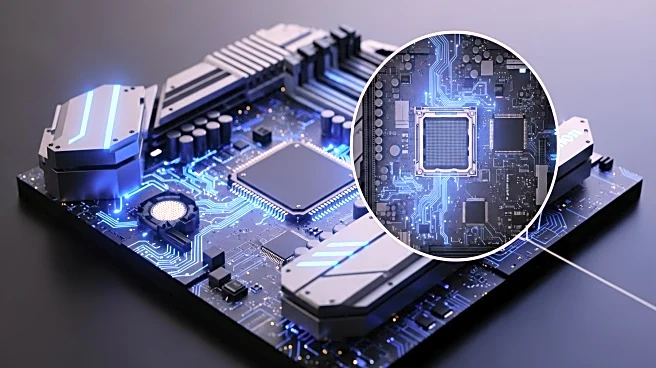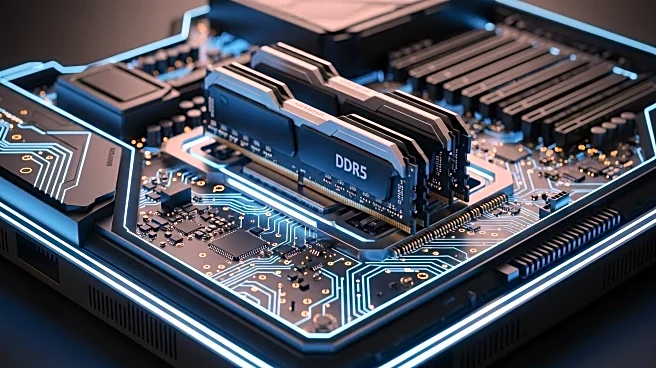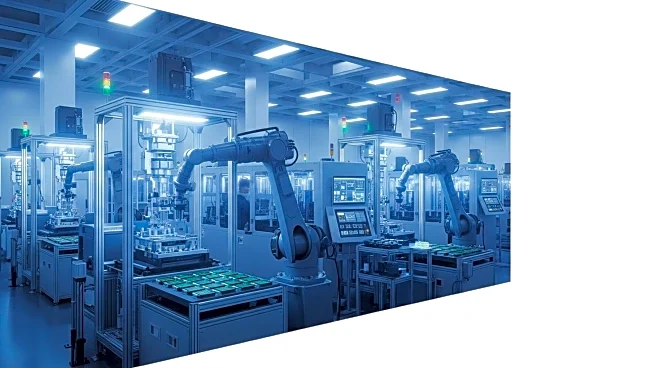What's Happening?
Qualcomm has introduced its latest Snapdragon X2 Elite Extreme chip at the Snapdragon Summit, showcasing significant improvements in performance for laptops. The new chip, built on the 'Oryon' CPU architecture and manufactured using 3nm process technology, features 18 cores, including 12 high-speed 'Prime' cores and six lower-power 'Performance' cores. The Snapdragon X2 Elite Extreme aims to compete with high-end x86 laptop processors from AMD and Intel, marking Qualcomm's aggressive entry into the laptop market. The chip also includes a next-generation Adreno GPU and a Hexagon neural processor, enhancing AI and GPU acceleration capabilities.
Why It's Important?
The introduction of the Snapdragon X2 Elite Extreme represents Qualcomm's strategic push into the laptop market, challenging established players like AMD and Intel. With its advanced AI and GPU capabilities, the chip is poised to attract creators and power users seeking high-performance computing solutions. Qualcomm's focus on AI integration and device security through Snapdragon Guardian could influence enterprise adoption, potentially reshaping the competitive landscape in the laptop industry. The chip's ability to run locally large language models and multitasking AI agents highlights its potential impact on AI-driven applications.
What's Next?
Qualcomm plans to release the first PCs equipped with the Snapdragon X2 Elite Extreme in the first half of 2026. As the chip becomes available in retail devices, its performance in real-world applications will be closely monitored. The success of the Snapdragon X2 Elite Extreme will depend on software optimization and the availability of Arm-native applications for content creation. Qualcomm's ongoing efforts to expand its chip offerings and improve AI capabilities suggest continued innovation and competition in the laptop market.
Beyond the Headlines
The Snapdragon X2 Elite Extreme's introduction raises questions about the future of Arm-based processors in the laptop market. Qualcomm's emphasis on AI integration and device security could lead to broader adoption of Arm-based solutions in enterprise environments. The chip's performance in controlled tests suggests potential disruptions in the market, but real-world testing will be crucial to validate its capabilities. As Qualcomm continues to innovate, the industry may see shifts in processor architecture preferences and increased focus on AI-driven computing.










